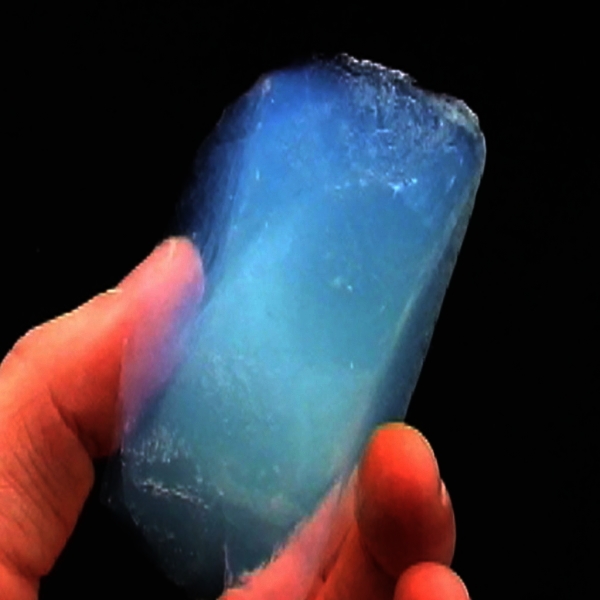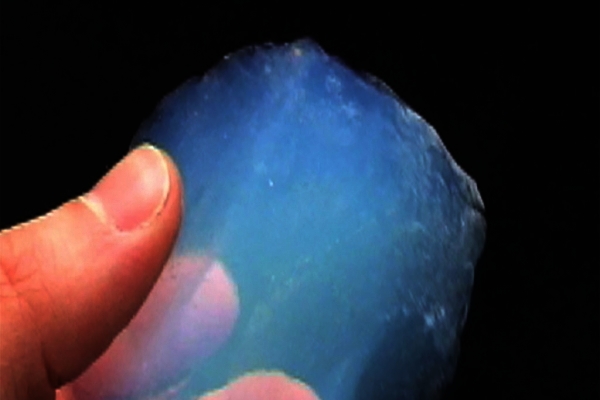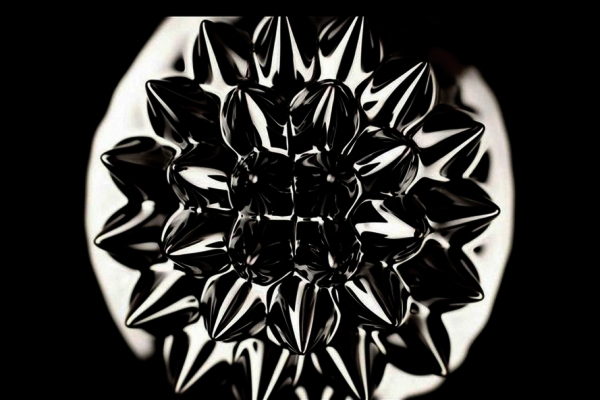Discover Resources by Tags: nasa
 | Up a level |
Number of items: 4.
Aerogel
Shared with the World by Dr Zoe Laughlin
This is a rare sample of silica aerogel which is essentially a glass foam whose nano-structure contains up to 99.8% air, making it the world's lightest solid. It was made by Steve M. Jones, NASA Jet Propulsion Laboratory as part of the Stardust research project, which involved sending a spacecraft containing a large piece of aerogel on a close approach to the comet Wild 2 in order to collect space-dust. What made aerogel ideal for the mission was that, this ultra fine foam can gradually decelerate and capture dust particles in pristine condition. The process of then sifting through the aerogel, micron by micron, to identify and collect the space-dust was the world’s largest collaborative microscopy activity. The material appears to be much more invisible than glass despite being less transparent for there is no hint of reflection on its surfaces, giving it the appearance of not being fully solid. Its azure colour is not due to any pigmentation, but is caused by the same phenomenon that gives colour to our Earth's atmosphere, namely Raleigh scattering of light. In other words, it is blue for the same reasons that the sky is blue. Explore aerogel on the Institute of Making website: https://www.instituteofmaking.org.uk/materials-library/material/aerogel.
Shared with the World by Dr Zoe Laughlin
Ferro Fluid
Shared with the World by Dr Zoe Laughlin
On first inspection ferro fluid is easily mistakable for oil, given its dark colouration and ability to flow. But when placed in a magnetic field, it becomes a gel and forms complex geometrical patterns that reflect the magnetic field lines. These rippling, intricate geometries take shape because ferro fluid is composed of 1) a liquid - typically an oil – which allows it to flow when there is no magnetic field, and 2) nanoparticles of iron oxide that align with a magnetic field to restrain the fluid flow. Ferro fluid is a mixture of solid and liquid using an emulsifier to ensure they mix together perfectly to achieve this unusual material behaviour. Ferro fluid was developed in collaboration with NASA in the 1960s to address the issue of moving fuels in zero gravity. Today it’s used in lubricants, as a seal in hard disks, and car suspensions. Ferro fluid also has a strong following of artists who apply its unique properties to generate unique shapes in their work. Explore ferro fluid on the Institute of Making website: https://www.instituteofmaking.org.uk/materials-library/material/ferro-fluid.
Shared with the World by Dr Zoe Laughlin
NASA’s Plans for Going Forward to the Moon
Shared with the World by Dr Charlene Murphy
NASA Presentation on plans for the Moon and Mars
Shared with the World by Dr Charlene Murphy


![[img]](https://open-education-repository.ucl.ac.uk//307/2.hassmallThumbnailVersion/264_Image3-600x600.jpg)

![[img]](https://open-education-repository.ucl.ac.uk//307/1.hassmallThumbnailVersion/264_Image4-600x400.jpg)

![[img]](https://open-education-repository.ucl.ac.uk//309/5.hassmallThumbnailVersion/ferro.1-600x600.jpg)

![[img]](https://open-education-repository.ucl.ac.uk//309/1.hassmallThumbnailVersion/178.2-600x400.jpg)


